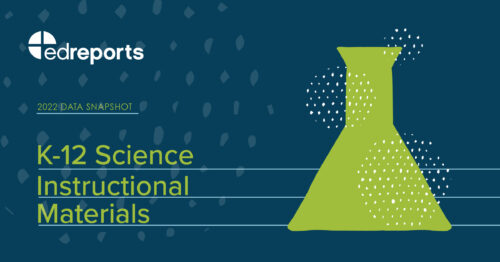Research shows that students learn primarily through their interactions with teachers and content. Because of the critical role materials play in supporting teachers and students, it is vital for all stakeholders to have a better understanding of the materials market including what’s available, what’s in use, and how states and districts can support educators to use high-quality curriculum that makes a difference in classroom practice and the instruction students receive.
In the decade since “A Framework for K-12 Science Education” (Framework) and the development of the Next Generation Science Standards (NGSS), educators have been calling for high-quality instructional materials that support students to gain the knowledge and skills they need to be college and career-ready. Yet, when it comes to available programs, there are very few that meet EdReports criteria for alignment and usability. The vast majority of teachers do not have access to the resources they need and deserve.
This report focuses on K–12 science curriculum and analyzes teacher perceptions of their materials, what they prioritized in the content they are using, and how they felt their materials measured up to those expectations. In addition, we explored important factors that influence the use of high-quality materials, such as access to curriculum-aligned professional learning. Our analysis brings together teachers’ experiences* and what EdReports has learned from reviewing science curriculum.
This Data Snapshot includes information about:
- The availability of quality K–12 science programs and how regularly these materials are used by teachers.
- The extent to which materials provide culturally relevant content and support a diversity of student needs, including those of multilingual learners.
- Important factors that influence the use of quality materials, such as ongoing access to curriculum-aligned professional development.
